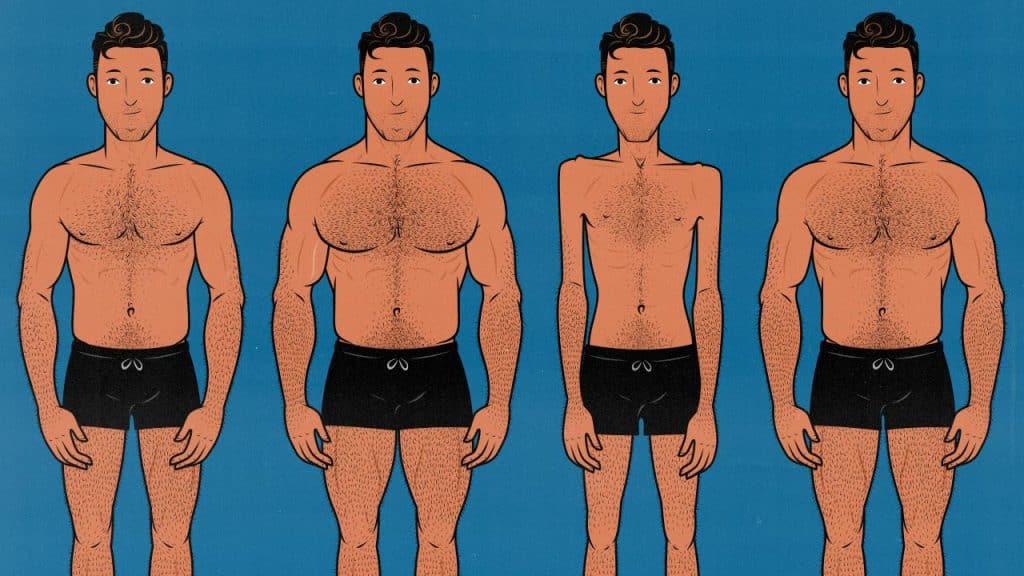
How to Build an Aesthetic Physique
Most men want to have an aesthetic physique. Few know exactly what that means. For example, when they guess the degree of muscularity women prefer, they’re off by thirty pounds (study). Many have a deeper misunderstanding, failing to connect their appearance to their fitness and strength. Some shun aesthetics, mistakenly thinking it’s superficial. Others are superficial on purpose, thinking it’s the best way to become attractive. That’s never as convincing as the real thing.
We’ll cover the attractiveness research. We’ve spoken to some of the study authors. We also went deeper, testing our hypotheses by conducting our own surveys. We collected thousands of responses for each: survey 1 and survey 2.
But be warned: this article is long. If you don’t want to read the whole thing, here’s a simple trick to improve your appearance: have a drink. It will boost your aesthetics (to yourself) by 50%. This is called “The Reverse Beer Goggles Effect,” also known as Beauty is in the Eye of the Beer Holder (study). It’s not a perfect solution, but it will save you twenty minutes of reading.
- Attractiveness Versus Aesthetics
- Why Do Women Prefer Strong, Fit, Athletic Men?
- The Ideal Male Body Weight (BMI)
- How Muscular Should You Get?
- The Ideal Body-Fat Percentage
- How Body Fat & Muscle Affect Your Face
- Building A More Masculine Physique
- How Posture Affects Your Appearance
- The Ideal Male Proportions
- Conclusion
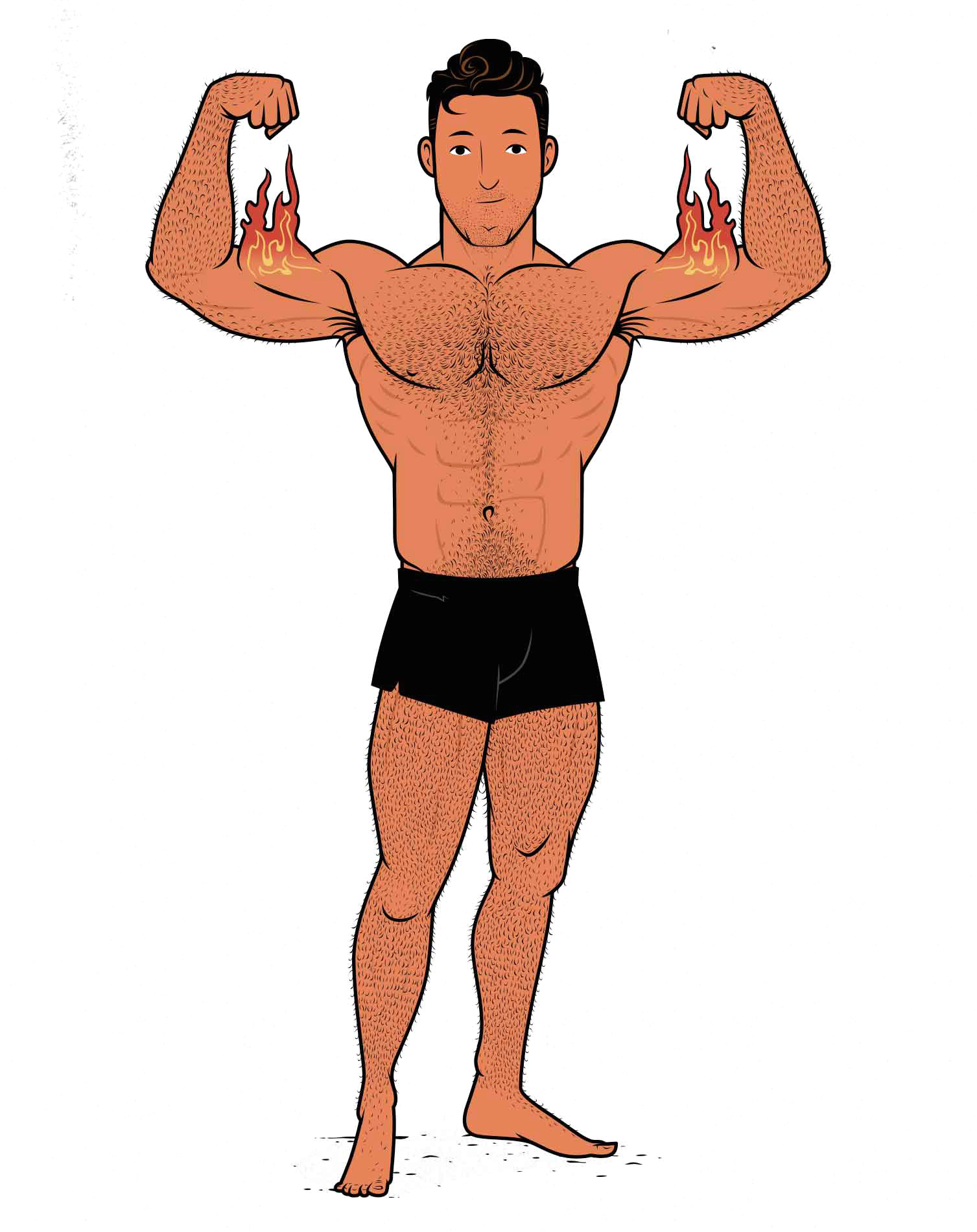
Attractiveness Versus Aesthetics
The Most Attractive Male Body
Over the years, we’ve conducted a few attractiveness surveys. We surveyed straight men about women’s bodies, straight women about men’s bodies, straight men about men’s bodies, and gay men about men’s bodies.
In our first survey, we showed a thousand people various photo spreads, asking them to select the bodies they preferred. We asked the women if guys should exercise to improve their appearance. They said, “No.” They didn’t want to date a bodybuilder with a contrived physique. They found it more attractive when a guy was naturally fit and athletic.
Then we presented those same women with photos of bodies with their heads cropped off and asked them to pick the most attractive one. In the first photo array, they chose the body of the celebrity personal trainer Bob Harper from The Biggest Loser:

They chose his body because they said he looked “naturally” fit. Of course, Harper isn’t naturally fit. He’s a professional personal trainer obsessed with exercise. He worked hard for that body. His physique is about as contrived as could be. Mind you, he isn’t overly muscle-bound. He looks more like a healthy lifter or casual athlete than a professional bodybuilder.
Next, we showed the women the physiques of various musicians. Again, we cropped the heads off. Most of the women didn’t recognize the bodies they were rating. Of all the musicians we showed them, they chose the body of Henry Rollins:

Henry Rollins is a naturally skinny punk singer. He famously started lifting weights to bulk up. He worked hard to become strong and intentionally keeps himself in great shape. He’s known for saying, “Discipline is money in the bank. A real friend, true strength.” Again, women chose the body of someone who engages in deliberate, rigorous exercise.
We also showed them a photo array of actors with their heads cut off. Women chose the body of Brad Pitt in Fight Club:
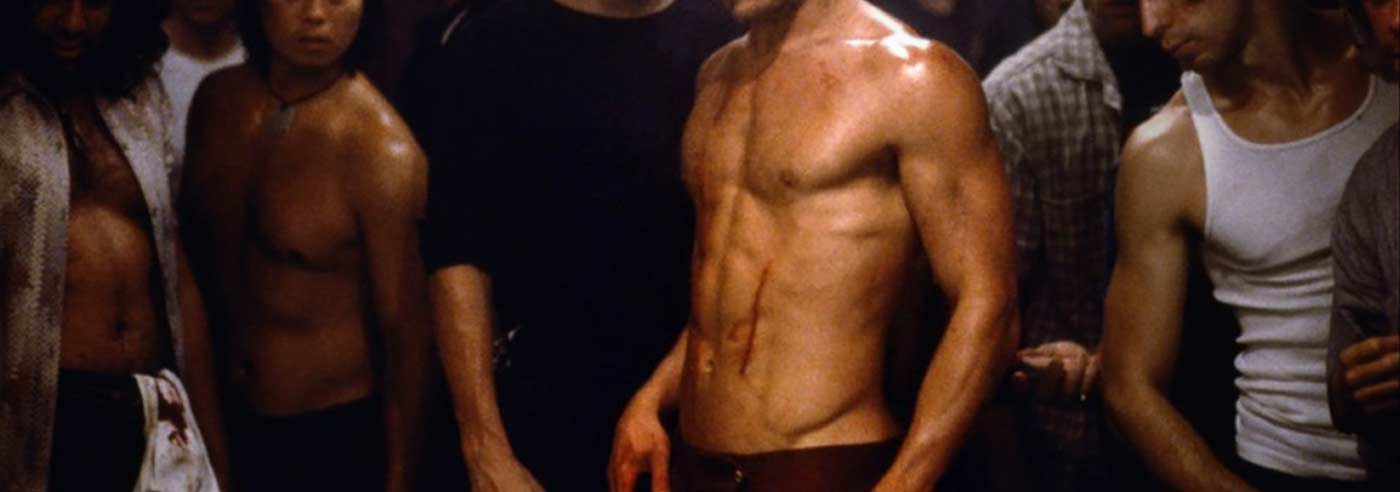
Brad Pitt is a naturally thin guy. To bulk up for Fight Club, he started lifting weights. It’s not the physique of someone “naturally” in good shape, but it’s not the physique of a diehard bodybuilder, either. This is the body of someone with fairly average muscle-building genetics who spent a few months building muscle.
There’s a miscommunication here. Women say they prefer “naturally” fit guys, but in reality, they prefer guys who look like they lift weights and eat well. Remember, we showed women a wide range of physiques. Guys who were out of shape got 0–1% of the votes.
The Most Aesthetic Male Body
Women were being honest when they said they didn’t find bodybuilders and fitness models attractive. If we look at the bodies women prefer, they aren’t musclebound or shredded. They look like fit, active guys who lift.
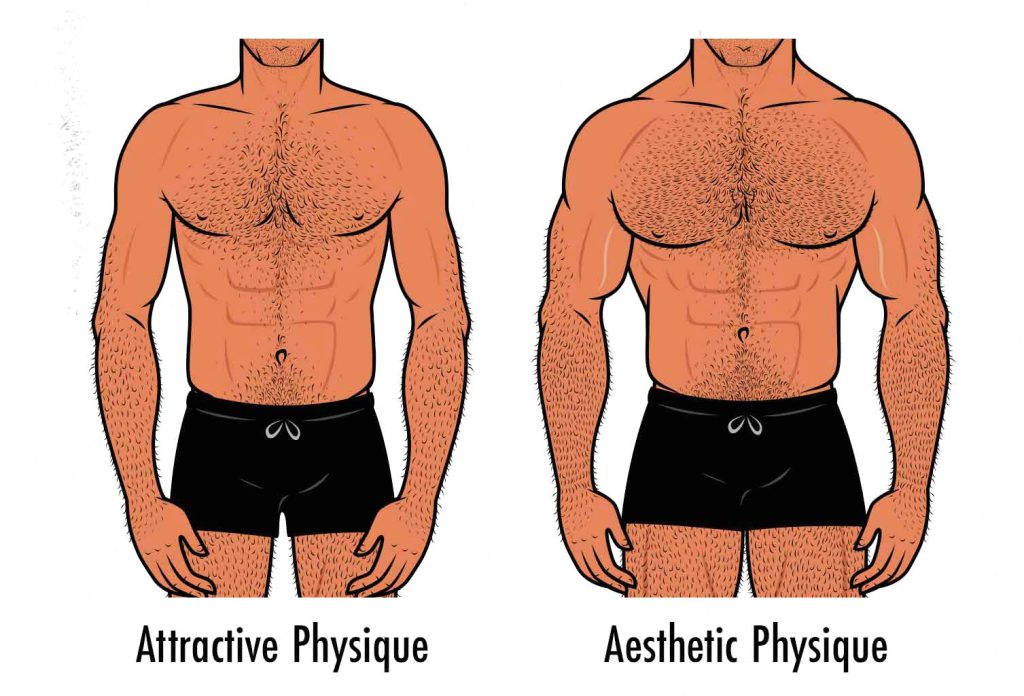
We showed women various bodies, including those of famous fitness models, bodybuilders, and actors. Women disliked guys who looked like bodybuilders. Male aesthetics icons like Zyzz, Frank Zane, and even Ryan Reynolds were considered overly muscular and overly lean:

I understand why Zyzz and Zane were rated as too muscular. They look like bodybuilders who abuse performance-enhancing drugs. Not only does that show recklessness, but it also gives off the impression of being vain, and it can look quite domineering.
It’s surprising to see Ryan Reynolds there, though. He’s the love interest in quite a few romantic comedies. Most women do find him attractive overall. I suspect what’s happening is that his physique looks a bit too contrived—like he’s trying too hard to look good.
If you want to know what women are drawn to, look at what women are drawn to. Romance novel covers are a good example of that:

We can also look at a study comparing the bodies shown in men’s versus women’s magazines (study). Most women are attracted to physiques that are in much better shape than average, like the guy you’d see on the cover of Cosmo. Most men find that physique too small.
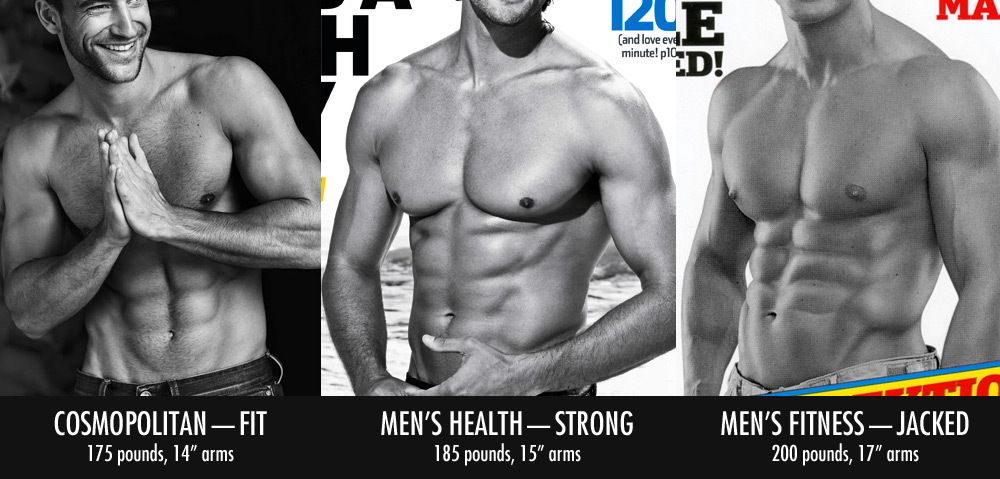
Some researchers argue that women would gravitate towards the Men’s Health physique in real life. The argument goes that both guys look ripped with their shirts off, but the Men’s Health guy also looks stronger, more capable, and more dominant than the Cosmo guy in social settings with other men.
However, once you get to the level of the guy on the cover of Men’s Fitness, with 20 pounds more muscle and 5 pounds less fat, you’re beyond the point that women prefer. That doesn’t mean women won’t find you attractive, just that the extra muscle won’t earn you any extra points. You just need to make sure you’re building muscle in a healthy way and don’t seem vain or domineering.
Why Do Women Prefer Strong, Fit, Athletic Men?
There are three main roots of physical attractiveness:
- Good character. People will make inferences about your character based on how you look. It helps to look kind, trustworthy, reliable, and disciplined. It hurts to look vain, aggressive, or like a pushover. You need to look like you will stand up for what is good and important.
- Good health and good genes. A big part of looking good is simply being healthy. We can’t change our genetics, but we can improve our immune function, blood flow, biological age, skin quality, and hormonal balance. When your body is working well, it looks good—clear skin, bright eyes, a youthful glow.
- Strength, fitness, and competence. The next part of looking good is looking like you’re able to do things. Are you strong and able? Are you fit and brimming with energy? Can you defend others, carry heavy things, and chase down a gazelle? This is why leanness, muscularity, and athleticism are so highly prized.
(Female beauty has less to do with strength, more to do with fertility and youth. That’s why women intuitively try to maintain a more youthful appearance, whereas men intuitively try to get stronger and fitter.)
Almost everything that makes a person look better draws from those roots.
You could argue that our appearance is superficial, but it isn’t supposed to be. It’s supposed to give us clues about what’s going on at a deeper level. That’s why we value it.
When a woman wears makeup, gets Botox, or plumps her lips with filler, she’s trying to signal better health and youthfulness. The signals aren’t real. It’s just an illusion. If it looks natural enough, it can work. If it doesn’t look natural, it can seem strange or fake or vain or alien.
Similar idea with steroids. They enhance strength, performance, and masculinity, but they also rob us of our health and our youth, such that the overall effect is usually a negative one. The oversized muscles give off that same vain and alien impression as oversized lips. Plus, the unnatural masculinity can make men look aggressive, selfish, and untrustworthy.
Being in good shape approaches it from the other angle. We’re improving things under the hood such that they shine through in our appearance. It’s much more powerful, and all of the side effects are positive ones.
The Ideal Male Body Weight (BMI)
Before we dive deep into an ocean of details, let’s start with the most aesthetic body weight. That way, you’ll know whether you need to gain or lose weight to improve your appearance.
One of the more important factors is simply being big and heavy enough. Crossley and colleagues found that women preferred men with a BMI of 24.5 (study). We can call this the most attractive (to women) body. Men thought guys looked best with a BMI of 26. We can call this the aesthetic (to men) physique.
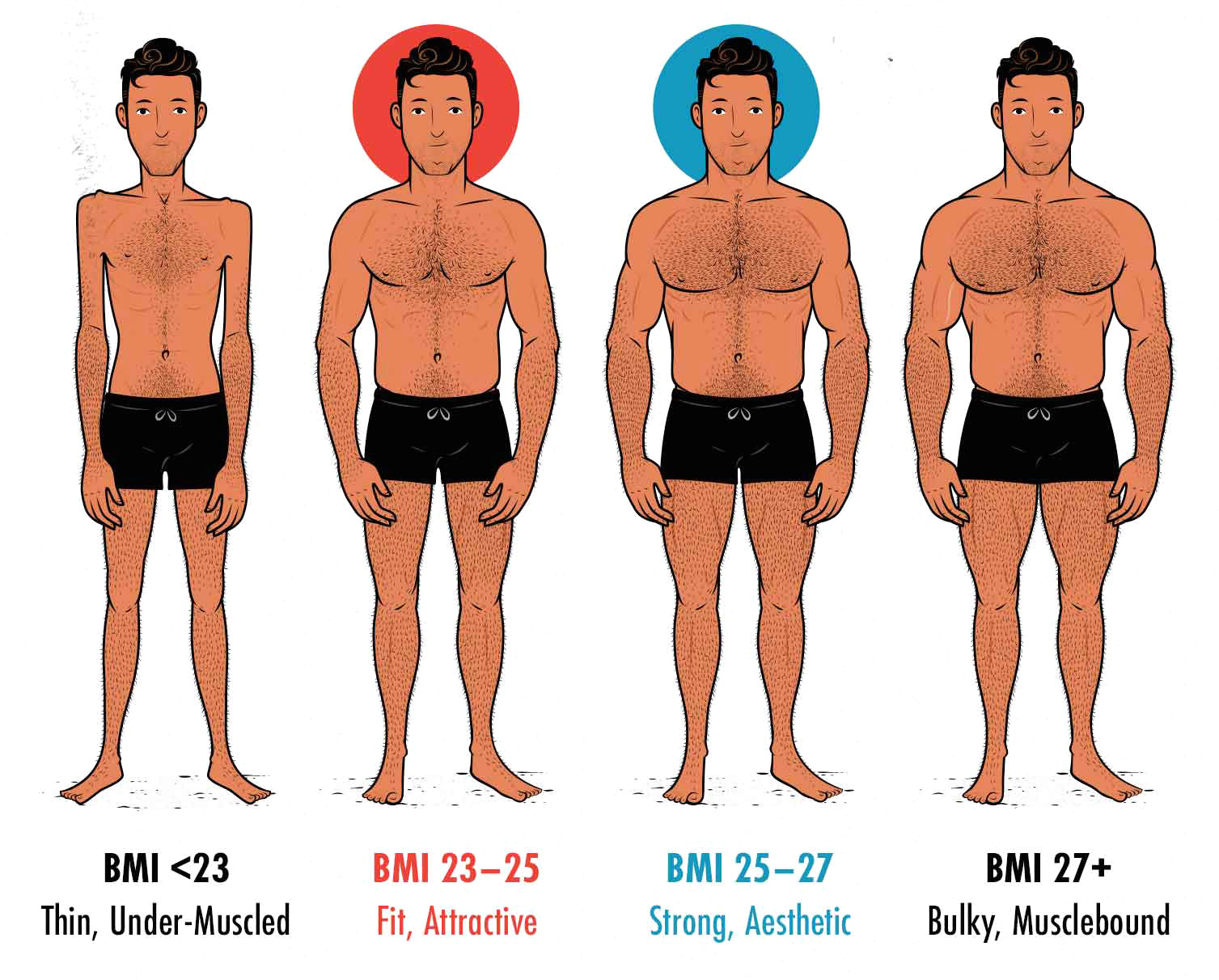
If you want to calculate your own ideal weight (and measurements), I made a calculator here. It goes a little deeper than this article, factoring in your bone structure along with your height. But we can cover the basics here. For a man who’s 5’10, the ideal body weight works out to:
- The most attractive weight: 171 pounds (BMI of 24.5)
- The most aesthetic weight: 180 pounds (BMI of 25.9)
The catch is that you need to be lean and muscular at that weight, with a body-fat percentage of 8–15%. Not only does it look better, but maintaining a relatively lean body-fat percentage is fantastic for your health (study).
Also, remember that these are rough estimations. Someone with a thinner bone structure might look better at a slightly lower body weight, whereas someone with a naturally burlier build might look best at a higher weight. These aren’t hard rules. Use your own judgment.
Even though it’s far from perfect, this finding gives you a clear path to venture down. If your BMI is less than 23, you can start by bulking. If your BMI is over 27, perhaps better to start by cutting.
How Muscular Should You Get?
How Muscular Should A Man Be?
Our drive for muscularity is innate and cultural. It’s a chicken-and-egg scenario. We love to eat both chicken and eggs because we’re naturally drawn to muscle and because society rewards us for getting stronger.
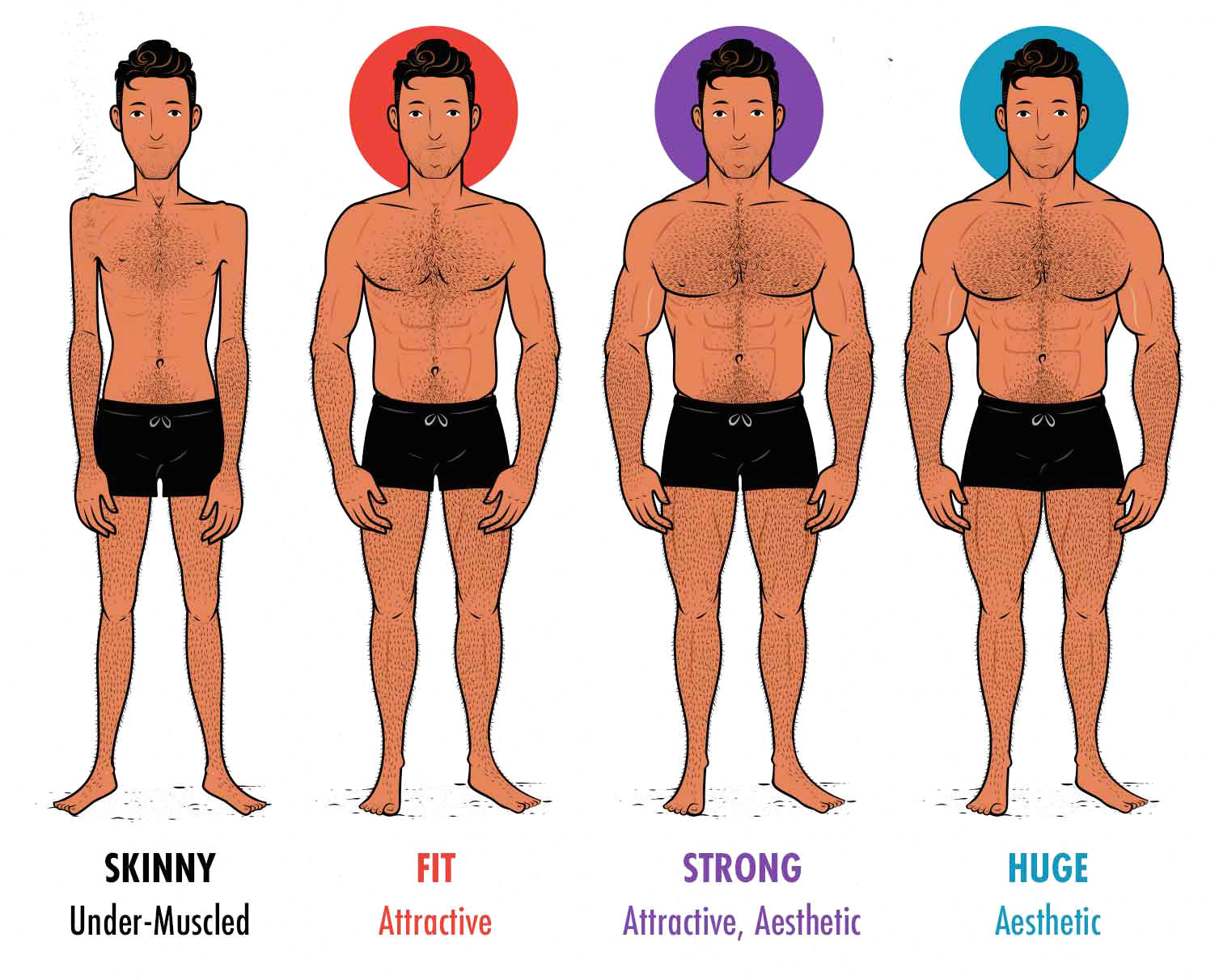
Being muscular is universally aesthetic. The ideal amount of muscularity can vary depending on who you ask, but strength is never a weakness. We evolved in a primitive and violent world, at least by modern standards.
Our muscles hint at our ability to dominate and protect others. That’s why strong upper-body muscles are especially prized (study). They’re the muscles that swing clubs, hurl javelins, draw bow strings, and throw punches.
Consider how you think about the muscles in your shoulders, arms, and chest compared to how you think about the muscles in your legs. Most of us have a more visceral desire to bulk up our upper bodies than our lower bodies. When women see us, their eyes are drawn to similar places. Men with more muscular upper bodies are seen as being more formidable.
Even now, muscle speaks of a lifestyle of health and abundance. Getting in shape requires dedication, consistency, and self-control. An aesthetic physique hints at your ability to get what you want out of life. We want to go with people who are going places.
How Long Does it Take to Become Muscular?
You can start getting the benefits of being muscular quite quickly. Becoming a stage-ready bodybuilder is a long, arduous road. Getting into good shape is not. The first twenty pounds of muscle you gain will have the biggest impact on your appearance. And thanks to the phenomenon of “newbie gains,” those first twenty pounds aren’t too hard to come by. Most skinny guys can go from “thin” to “fit” within six months (source).
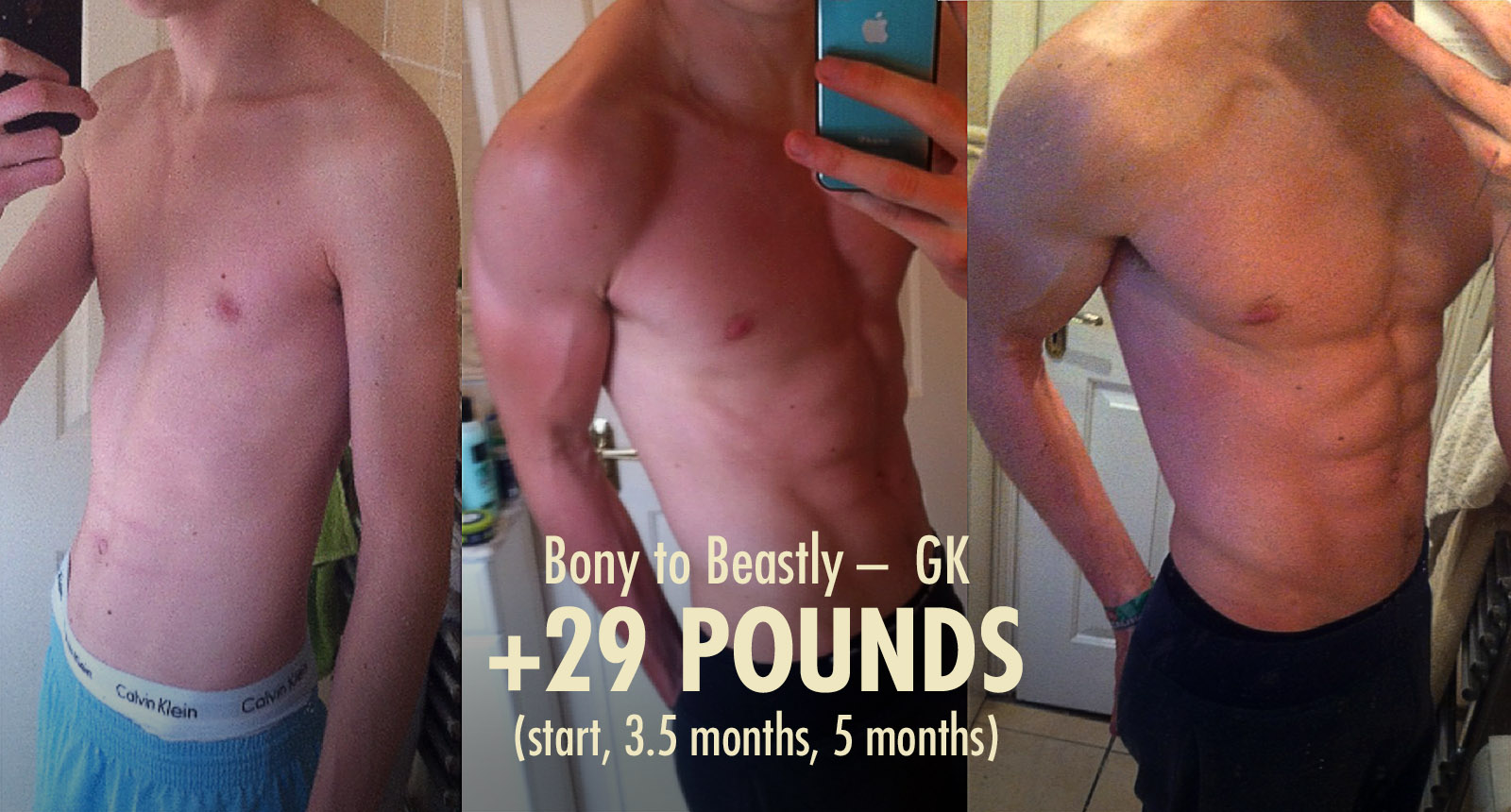
As you gradually build muscle, you’ll inch closer to your genetic potential. You won’t just look like someone who exercises; you’ll look strong. This can take 2–3 years of hypertrophy training while eating a good bulking diet. And keep in mind that most people take breaks. If you only spend a third of each year bulking, it will take you three times as long.
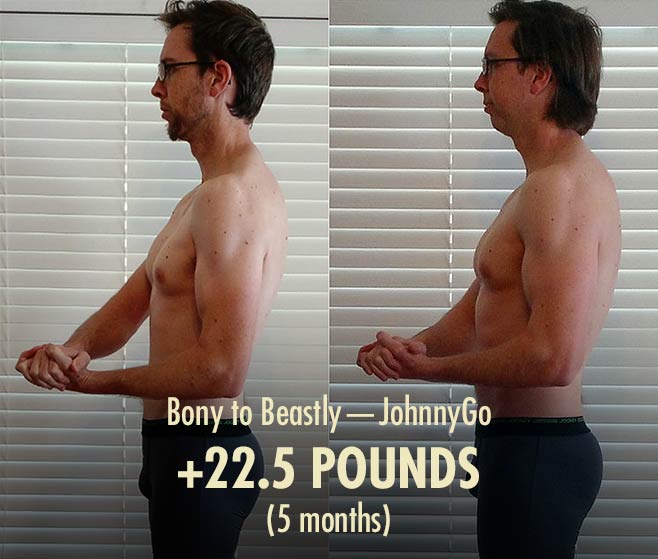
Once you’ve built a strong physique, the process slows again. But if you’ve already put in the work to get strong, you’re probably in the habit of lifting weights and exercising. It can be fun to keep improving, building a truly aesthetic physique.
Can Men Get Too Muscular?
As we evolved, women learned to favour stronger, more capable men. The most attractive guy was the one who looked like he could swing his club the hardest and hurl his javelin the furthest. These were guys with big shoulders, backs, arms, and chests.
But muscle isn’t free. There are tradeoffs. Beyond a certain point, additional muscularity starts to hurt more than it helps. Excessive testosterone makes us reckless and interferes with our heart health. Oversized muscles are less efficient. Our tendons and bones can only support so much mass. And so our bodies place strict limits on how muscular we can become.
Men with outlier genetics or who use performance-enhancing drugs can sometimes go beyond the “ideal” degree of muscularity. It stops looking attractive and starts looking strange. Whatever The Rock is doing, it isn’t normal. Men think it looks cool. He looks like a hero from a comic book. But it looks strange to most women. It isn’t what they dream of (study.
It’s hard to say how muscular is too muscular. Everyone is built differently. Our bones grow to different thicknesses, our frames span different breadths, and we all grow to different heights. Maybe you’re 5’6 and cap out at 170 pounds. Maybe you’re 6’2 and can bulk up to beefy 220. Either way, you’ll reach peak attractiveness before you get there. And as long as you stay natural, you won’t ever get to the point where you stop being attractive.
The Ideal Body-Fat Percentage
After muscularity, the most important factor is body fat (study). There have been periods in history when chubbier people were more attractive. It was a sign of affluence—of being able to afford an abundance of food. In modern times, most people in first-world countries struggle with overeating, not starvation. Now, we tend to consider leaner bodies more attractive, on average.
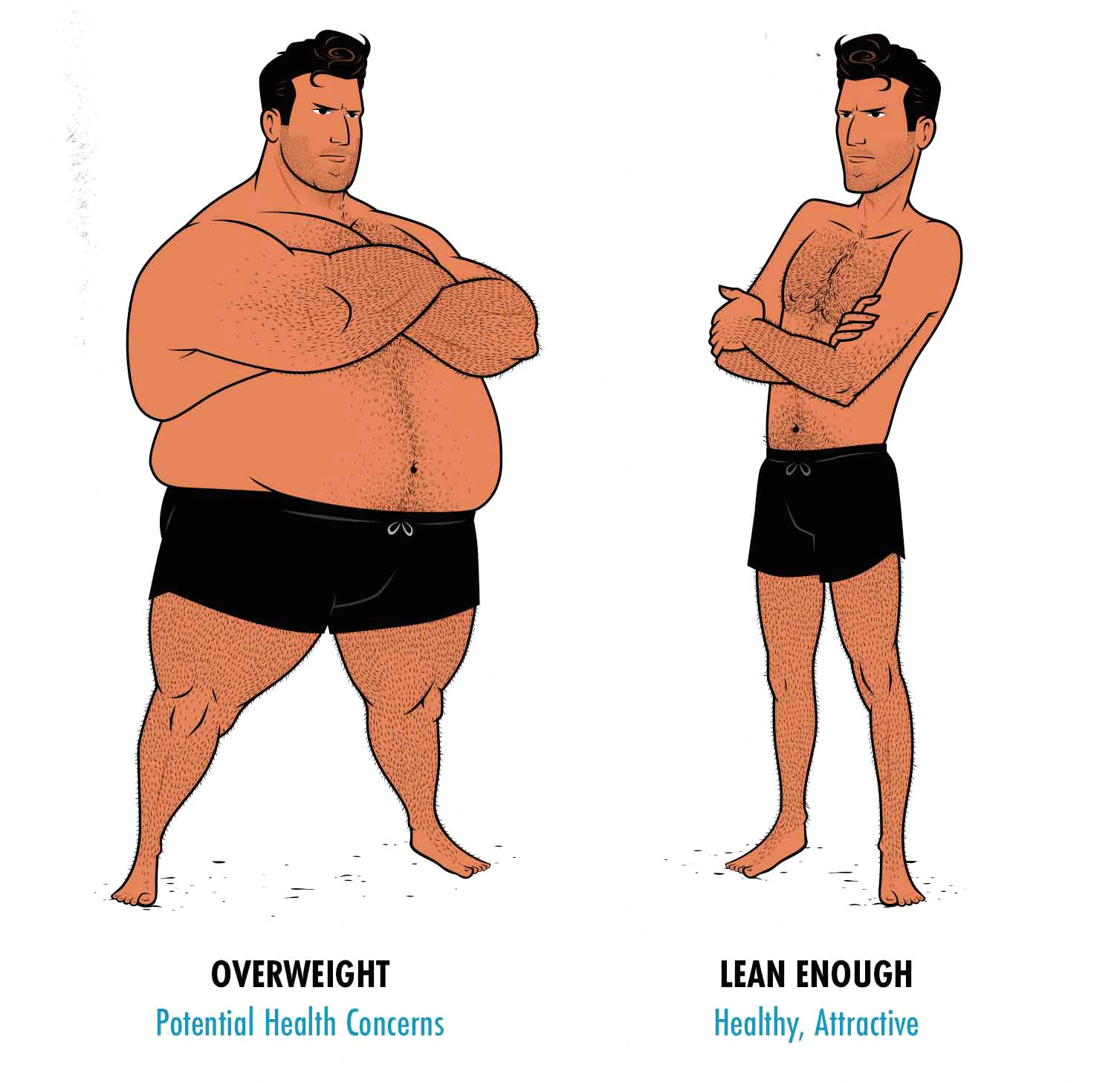
The average person’s propensity to overeat is both genetic and environmental. Evolution didn’t prepare them for such an extreme abundance of junk food. Our situation is somewhat different. Most naturally thin guys have little trouble maintaining a healthy and attractive body-fat percentage. That’s even true of most skinny-fat guys once they learn how to get in shape.
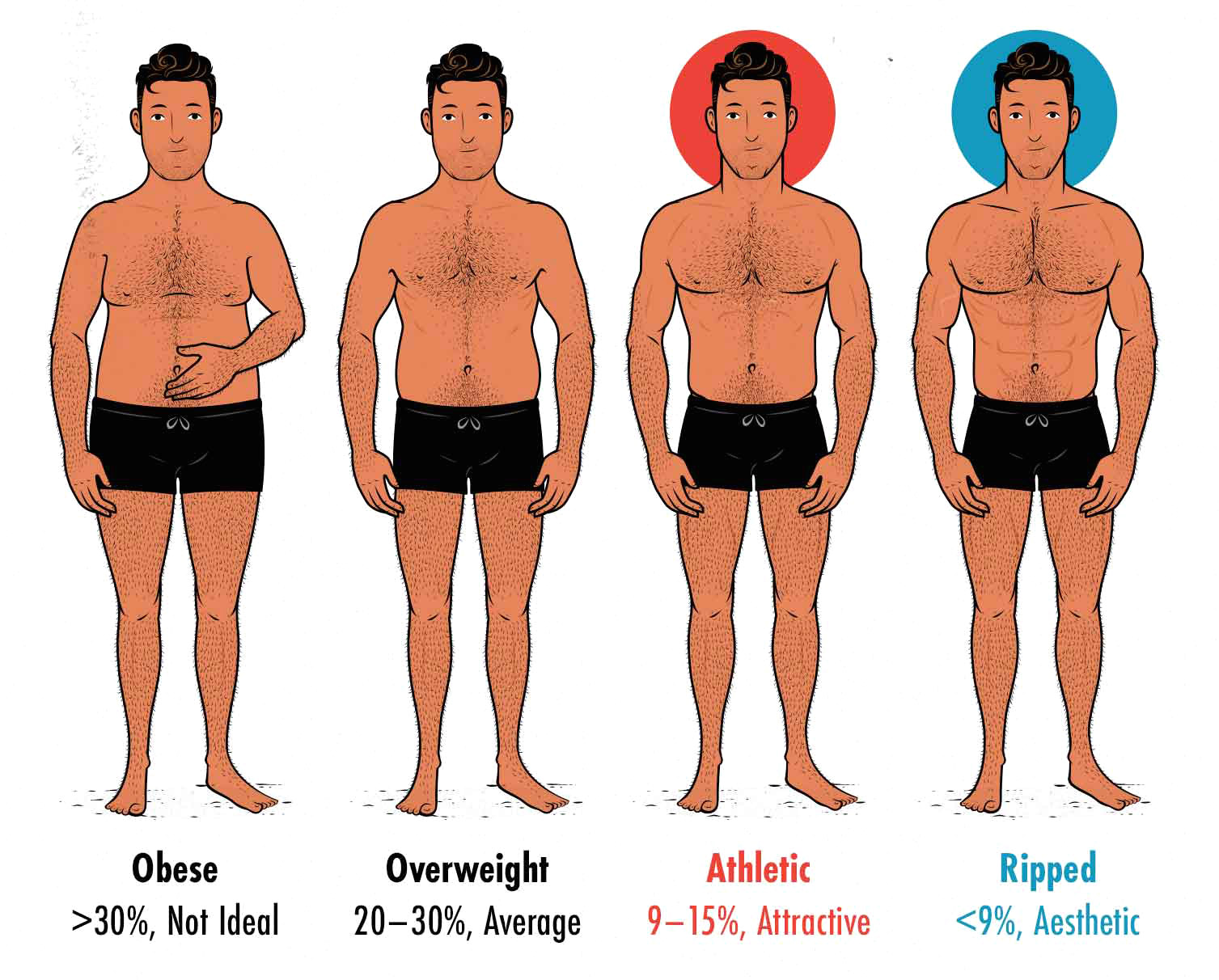
Anywhere in the 8–15% range seems ideal for aesthetics. If you’re more muscular, you may be able to handle even more heft, looking great at closer to 20% body fat. The trick is to look fit, athletic, or strong, not out of shape.
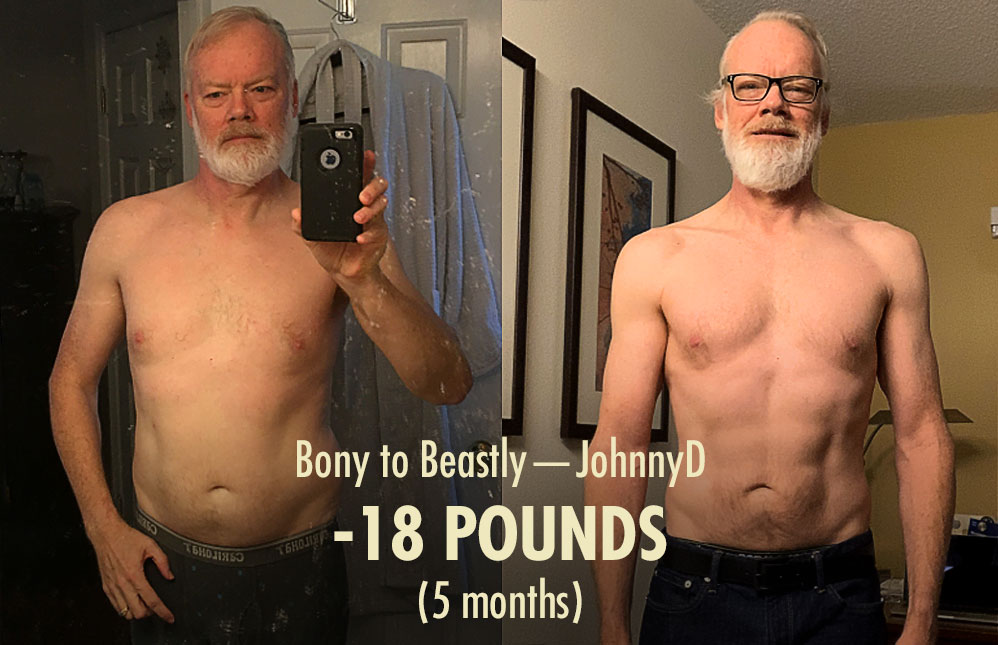
How Body Fat & Muscle Affect Your Face
Getting into better shape improves the aesthetics of your face. At high body fat percentages, your jawline will grow rounder, your neck will get fleshier, and you’ll lose the definition of your face. At the other extreme, your neck will shrink, your cheeks will hollow out, and your face will look gaunt. Bodybuilders call it the “death face.”
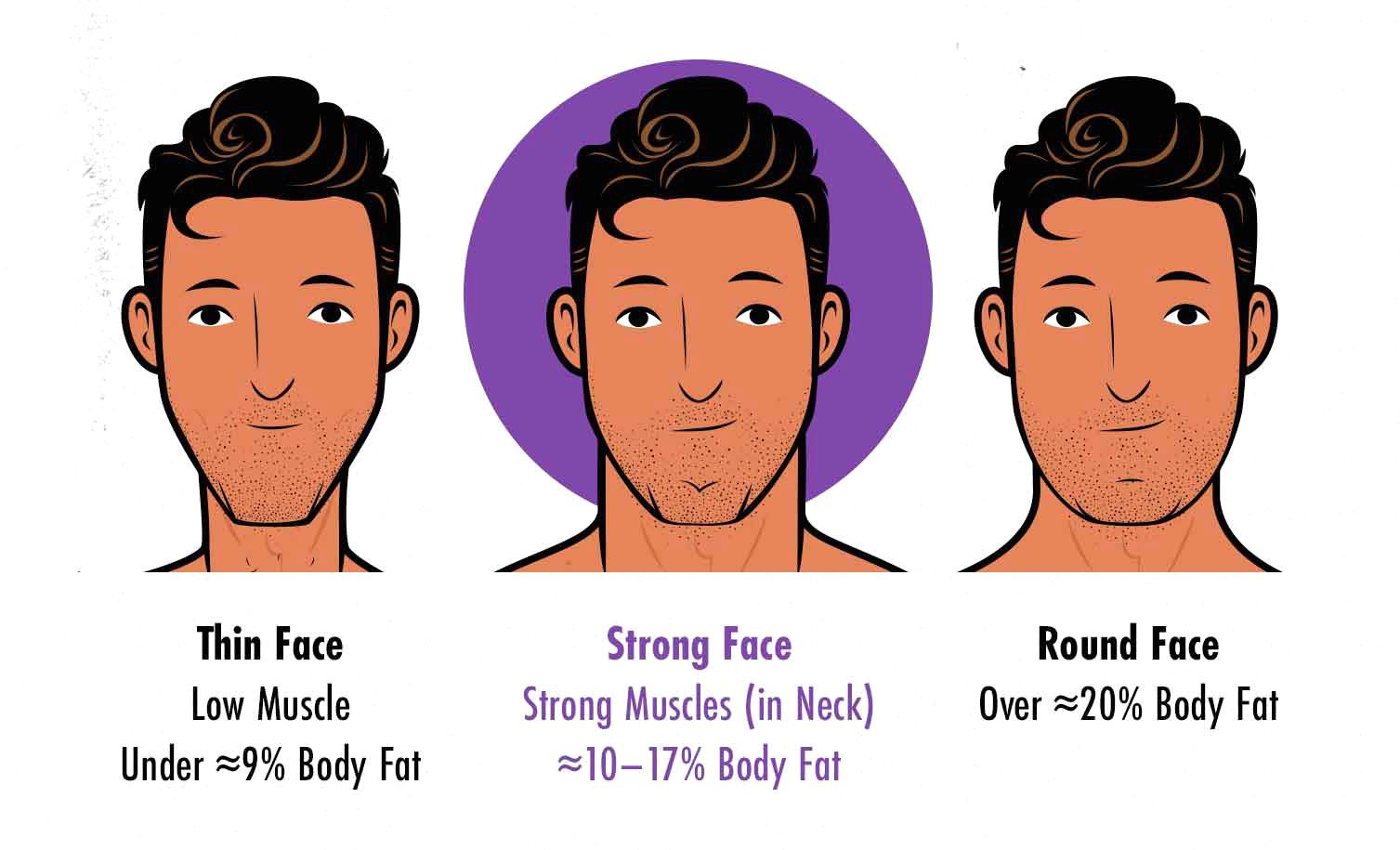
You can strengthen your jaw. If you eat a good diet that’s rich in protein, your body will hold onto more muscle, and so you may notice that your face becomes slightly more muscular. Some guys also clench their jaws when lifting weights, stimulating muscle growth. The best way to intentionally build bigger jaw muscles is probably with mastic gum.
Exercising and eating a good diet also make your skin appear more youthful. It also gives you higher levels of oxygenated blood, improving your skin tone and making your face appear more attractive (study).
The best way to improve your facial appearance, then, is to:
- Stay within a body-fat percentage range of roughly 8–20%. This varies from person to person, but your face will probably look its best somewhere within that range. Fortunately, this range also tends to be ideal for our general health.
- Build a strong neck. The muscles in our necks are like the rest of our muscles. If you want to make them bigger, you must make them stronger. For more, we’ve got an article on neck training.
- Exercise. Ideally, you’d do both hypertrophy training and cardio.
- Eat a balanced diet. It should be rich in protein, carbs, healthy fats, and fibre. It should include plenty of fruits and vegetables, nuts and seeds, and lean meat and seafood. Plant-based diets can be great, too. So can keto diets, at least for losing fat.
Building A More Masculine Physique
More masculine men tend to be bigger, leaner, and more muscular, with broader shoulders and narrower hips. But women can also tell how masculine we are from our body language, stride, voice, and scent (study, study, study).

Testosterone affects our personalities, too, influencing our ambition, aggression, and confidence. And the variance in testosterone levels is huge. Some guys walk around with 4-5 times as much testosterone pumping through them as others.
You’ll notice that being masculine doesn’t make men want to cut their hair short, prefer blue to pink, or avoid high heels. In the 1920s, pink was the masculine colour. Back in medieval times, military men wore high heels. And in the Hyborian Age, the most masculine men had long, flowing locks of hair. Cultural norms shift with the times.
- Younger women seem to prefer thinner, more androgynous, less threatening men. Think of the aesthetic of Harry Styles and K-pop stars.
- More feminine women are drawn to more masculine men. Conversely, more masculine women are often drawn to more feminine men.
- Women who are more confident in their attractiveness prefer more masculine men. Some researchers speculate that only the most confident women feel like they can keep a masculine man interested in them in the long term.
Interestingly, men in long-term relationships have slightly lower testosterone levels. It’s unclear whether settling down causes our testosterone to drop or if lower testosterone makes us want to settle down (study).
With all of these studies, it pays to have a certain amount of skepticism, at least until they’ve been reproduced a number of times. Many studies show that being reasonably strong and healthfully lean improves our appearance. This masculinity stuff is more speculative.
How Posture Affects Your Appearance
Some research shows that having a more dominant, open, and “expansive” posture makes men appear more attractive (study). Guys who stand confidently are rated more attractive than guys who slouch with their shoulders caving forward. That finding is fairly intuitive, but it’s more about body language. There’s barely any research on whether improving your natural posture can make you more attractive.
It’s debatable how much our posture affects health and performance, especially if you’re able to move well and aren’t in pain. For instance, many deskworkers develop forward-tilted hips (anterior pelvic tilt). That’s often considered bad posture. However, many Olympic sprinters develop that same hip tilt. On them, it’s considered athletic.
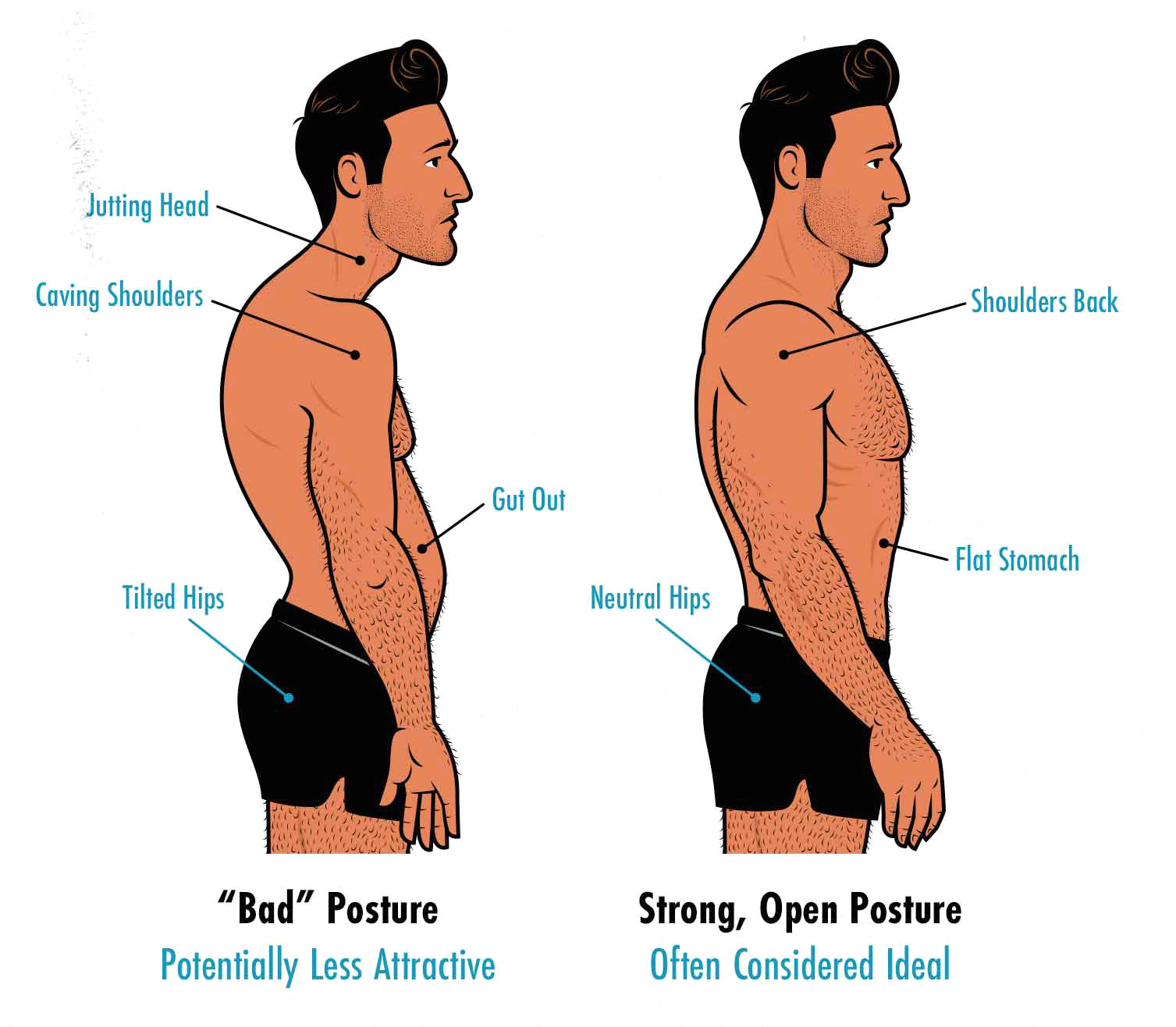
Most people want to stand tall, with wide shoulders and flat stomachs. Weak muscles have trouble holding our bodies in that position. The good news is that getting stronger and fitter seems to improve posture quite dramatically.
To strengthen your posture, do exercises like goblet squats, front squats, push-ups, deadlifts, overhead presses, and loaded carries. These exercises strengthen your hips, abs, obliques, spinal erectors, upper backs, and the dozens of other postural muscles that hold you upright.
It may be that being active can improve your posture as well. For example, if you go on long walks, your body will learn to move more efficiently, holding itself upright.
The Ideal Male Proportions
Now, we’re moving into the finer details. If you’re strong overall, it doesn’t matter if you have the ideal shoulder breadth or biceps girth. Similarly, if you’re lean overall, it doesn’t matter how big your waist is. So before you worry too much about the proportions of your muscles, it’s usually wiser to focus on getting stronger and/or leaner. That’s what will improve your aesthetics the most.
The Ideal Shoulder-to-Waist Ratio
You may have heard that the ideal male shoulder-to-waist ratio is 1.6-to-1. This ratio frequently occurs in nature and is often called the Golden Ratio or the Adonis Index. But it’s just a proxy for muscularity and leanness, so don’t focus on it too directly.
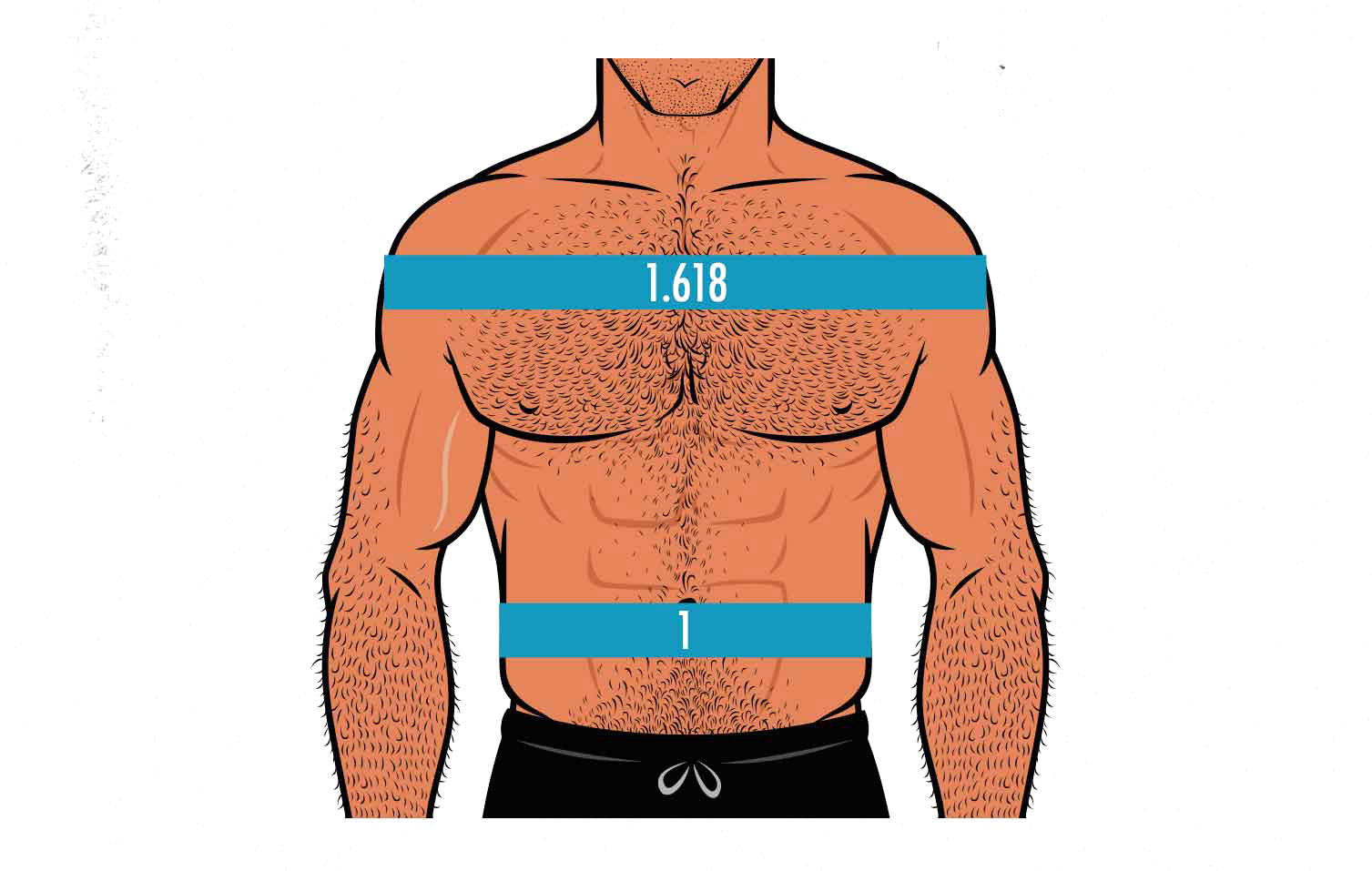
Women tend to prefer men with broader shoulders (study, study, study). Broad shoulders look good because they hint at upper-body strength. Strong men have more muscle packed around their shoulder girdles: big deltoids, chests, upper backs, and necks. So the best way to improve your appearance is to build more muscle—especially in your upper body (study, study).
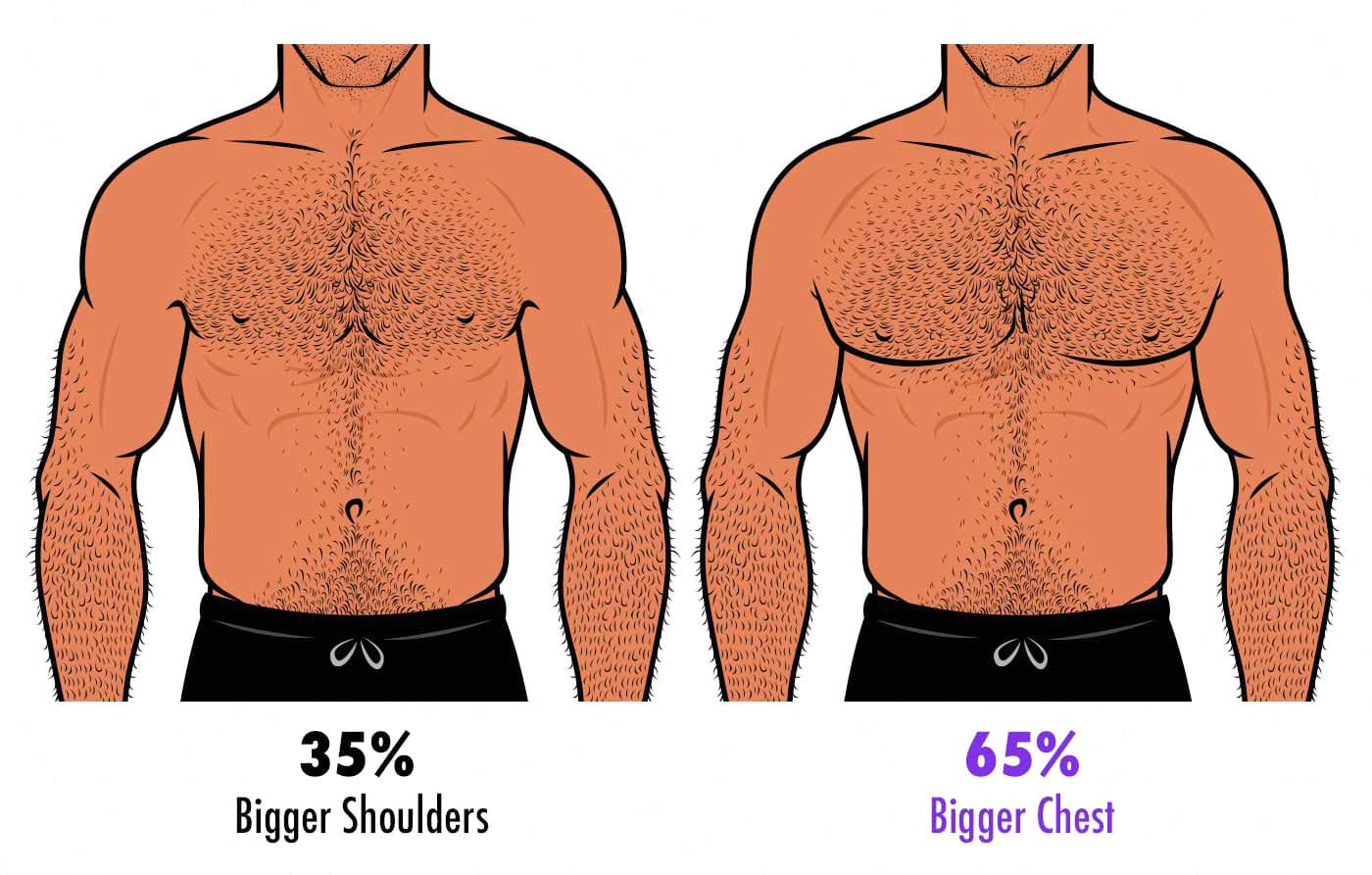
To test this idea, I drew two men, one with bigger shoulders and the other with a larger chest. When I surveyed 400 women, twice as many preferred the guy with the larger chest, even though his shoulders weren’t as broad. Quite a few studies have looked at chest-to-waist ratio instead of shoulder-to-waist ratio (study). Their findings line up with mine.
There’s nothing wrong with building broader shoulders, just don’t do it at the expense of your other muscles. The coveted V-taper physique has broad shoulders tapering into a strong chest and upper back, which then tapers down into a small waist. If you focus on just your shoulders, you’ll develop a T-taper. More on that in this article.
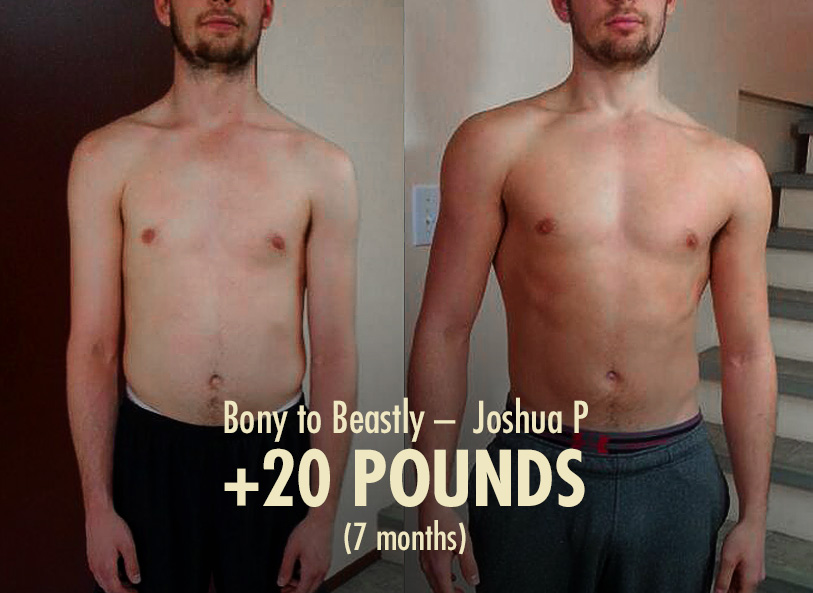
Build a physique that’s muscular overall. Focus on getting stronger at the big compound lifts. Lifts like the front squat, bench press, deadlift, overhead press, chin-up, and barbell row. Add some biceps curls, triceps extensions, and lateral raises to bulk up your arms. Your muscles will grow bigger and your shoulders will grow broader.
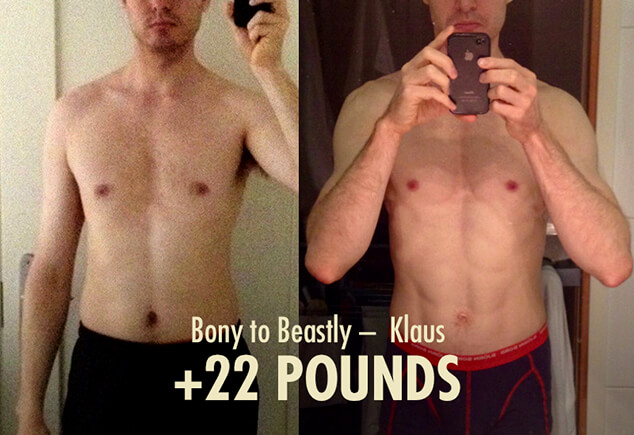
The caveat here is that some guys have naturally broader shoulders. This makes it easier for them to appear strong, masculine, and lean. But we have no control over how long our collarbones are. All we can control is how lean and muscular we are.
Ideal Body-Part Measurements
Going further down the list of priorities, we can look at the ideal proportions for each muscle group. According to Dr. Casey Butts’ research, the first step is to measure (or estimate) the size of your waist. Ideally, you’d take your waist measurements at a body-fat percentage of roughly 8–15%. Using that waist measurement, you can then calculate the rest of your ideal proportions.
I made a calculator that does all of this for you. It’s a little bit more detailed, too, factoring in your bone structure. But here’s how to do it by hand:
- Ideal waist circumference: the size of your waist at 8–15% body fat, measured at the height of your belly button.
- Ideal hip circumference: waist circumference × 1.25. Measured at the largest point.
- Ideal thigh circumference: waist circumference × 0.75. Measured at the midway point between your knee and hip socket.
- Ideal shoulder circumference: waist circumference × 1.618. Measured with your muscles relaxed at the largest point.
- Ideal bicep circumference: waist circumference × 0.5. Measured with your arms flexed at a 90-degree angle at the largest point.
- Ideal neck circumference: same as biceps. Measured at the narrowest point.
- Ideal forearm circumference: biceps circumference × 0.8. Measured with your fist clenched, arm held out straight, at the thickest point.
For example, here are the ideal proportions for a man who has a 30-inch waist at 12% body fat:
- Waist: 30 inches
- Hips: 37.5 inches
- Thighs: 22.5 inches
- Shoulders: 48.5 inches
- Biceps: 15 inches.
These proportions loosely align with statues of Ancient Greek warriors and modern romance novel cover models. The good news is that naturally skinny guys are often able to achieve these proportions, and often within a couple of years.
Conclusion
Research shows that, on average, women are most attracted to men who look fit, athletic, lean, and strong. Where men go wrong is assuming women prefer guys who look like bodybuilders. That’s not the case.
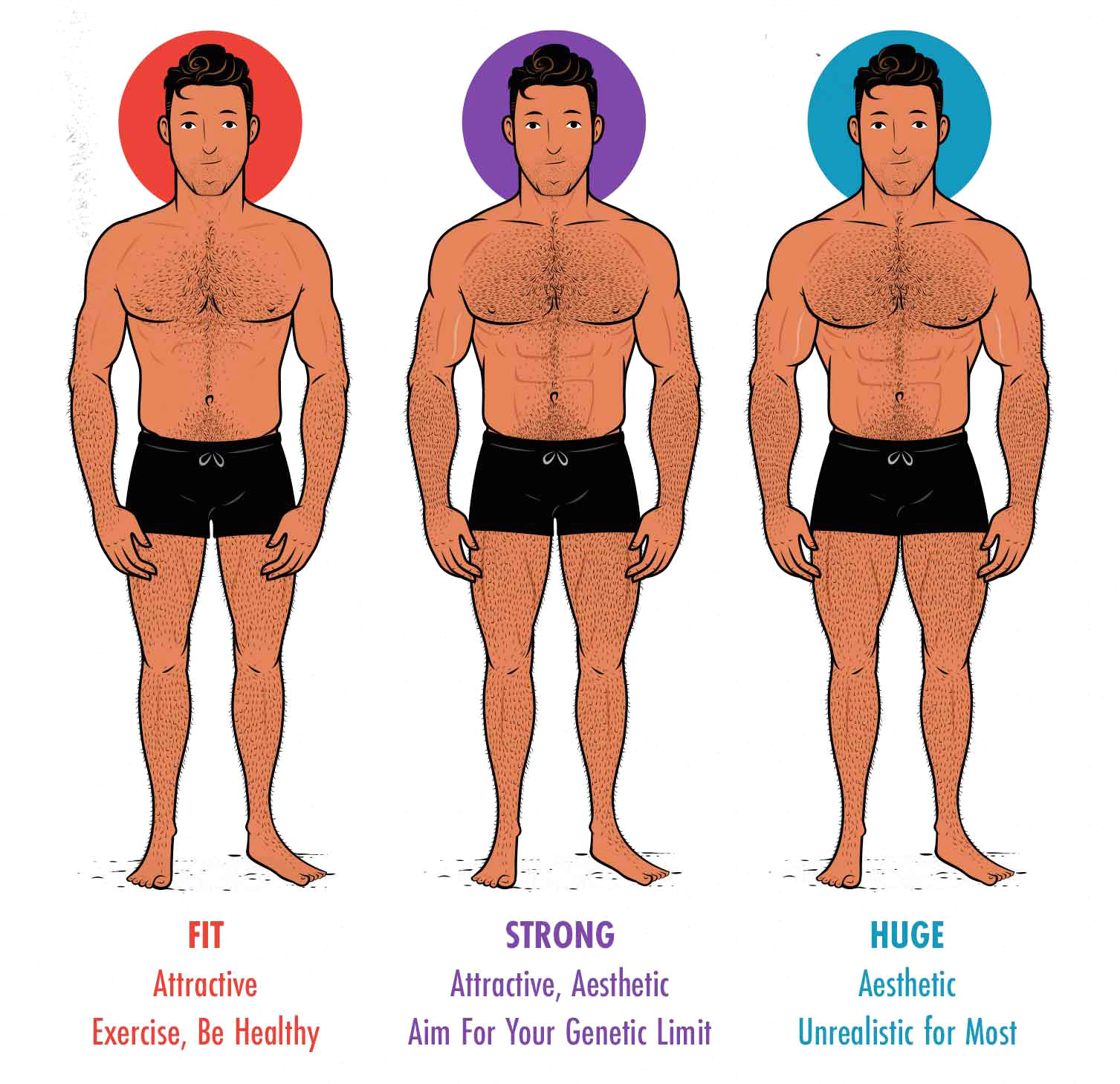
Most women prefer men who look “naturally” lean and strong. Think of a guy with a healthy body weight (BMI of 23–26.5) who lifts weights and has a flat stomach with some furtive upper abs (8–15% body fat). That’s realistic for us. That degree of muscularity is well within our genetic potential. That degree of leanness is healthy and sustainable.
For most of us, an attractive physique is something we can build within a few months or years and then happily maintain into our sixties or seventies.
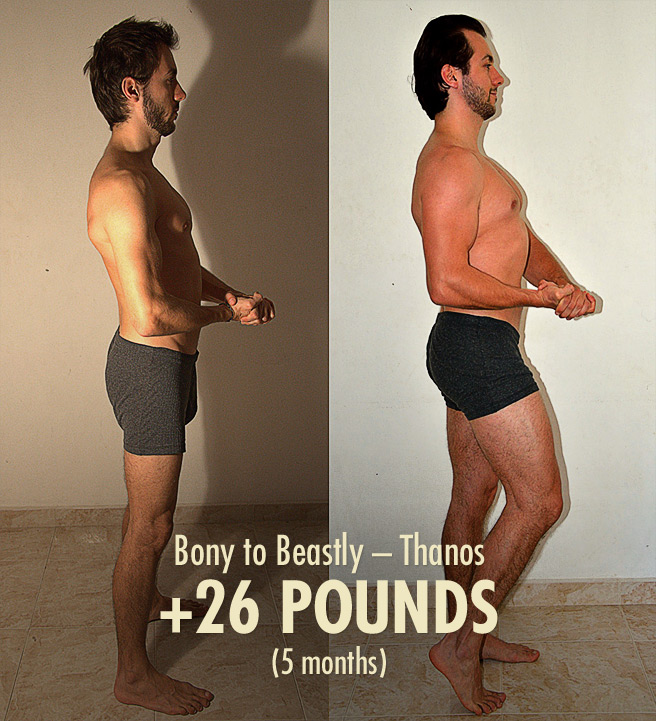
Alright, that’s it for now. If you want more, we have a free muscle-building newsletter. If you want a full bulking program, including a 5-month workout routine, diet guide, recipe book, and online coaching, check out our Bony to Beastly Bulking Program. Or, if you want an intermediate bulking routine, check out our Outlift Intermediate Bulking Program.
Shane Duquette is the founder of Outlift, Bony to Beastly, and Bony to Bombshell, each with millions of readers. He's a Certified Conditioning Coach (CCC), has gained 70 pounds, and has over a decade of experience helping more than 15,000 people build muscle. He also has a degree in fine arts, but those are inversely correlated with muscle growth.
